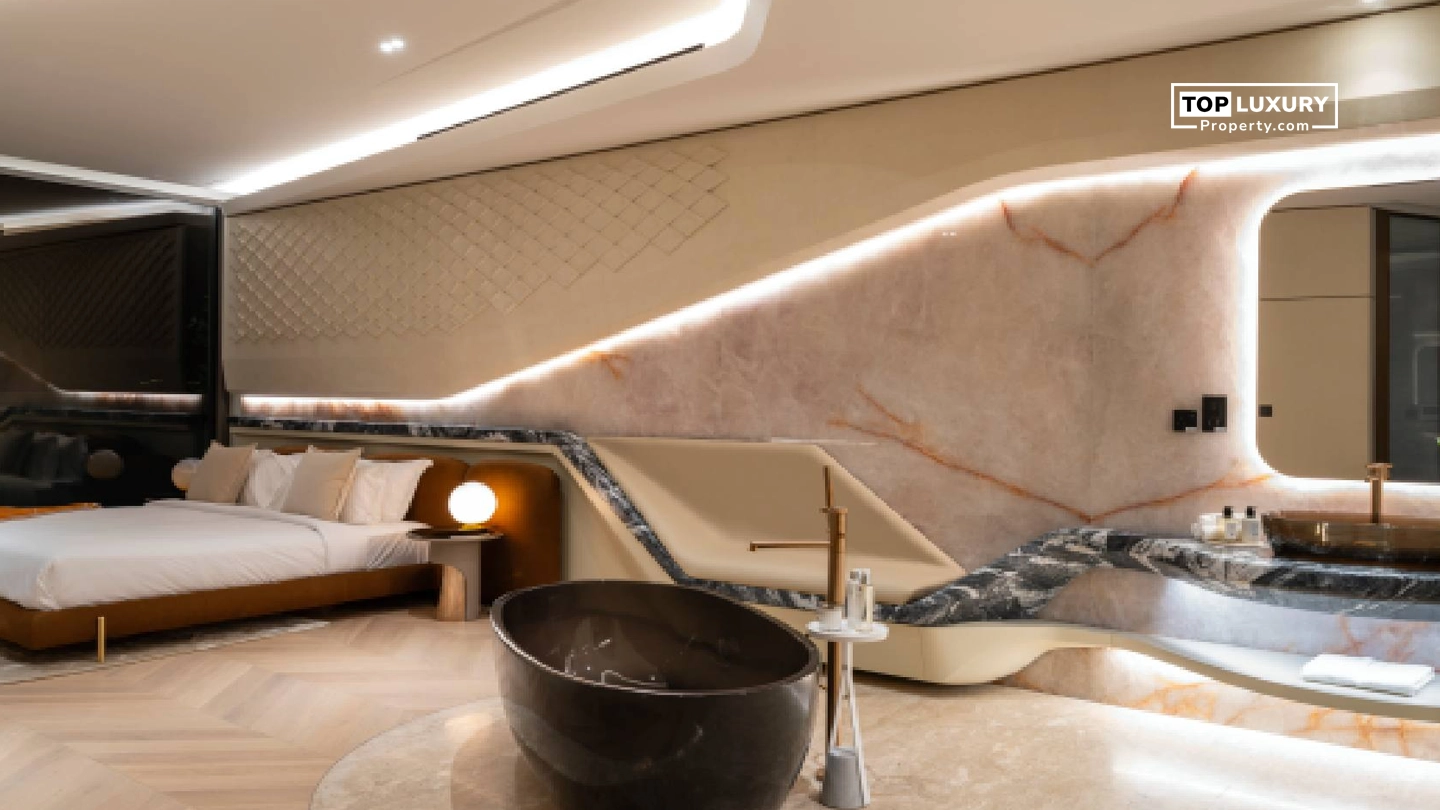Introduction:-
The Vastu Shastra being the ancient system of architecture and spatial arrangement has always been associated with enhancing harmony, prosperity and health. Being rooted in tradition, its rise in modern real estate and interior design raises one critical question that is: Is there any science behind Vastu? This article provides a deep analysis of origins, energy principles and scientific scrutiny of Vastu Shastra exploring whether it really is the works or is just a belief.
Vastu Shastra Origins and Principles:-
Vastu Shastra combines two Sanskrit terms. “Vastu” refers to a dwelling and “Shastra” means either science or knowledge. Vastu Shastra is believed to be over 5,000 years old and has been recorded in texts such as the Rig Veda, the Samarangana Sutradhara and the Mayamatam. Here are some of the important Vastu principles:
Five Elements (Panchabhutas): Earth, Water, Fire, Air, and Space- each element must be balanced in the design.
Eight Directions (Ashta Dikpalas): Every direction has a deity along with its properties.
Central Zone (Brahmasthan): The sacred central zone, free & open as to allow the energy to flow freely.
Directional Placement: Placement of rooms, doors, furniture, and even colours is based on directional principles.
The principles of Vastu try to harmonize the human experience with forces of nature through proportion and design principles of space.
The Role of Energy Flow in Vastu Design:-
One of the most central tenets of Vastu energy flow, meaning that the arrangement of space will influence the flow of positive and negative energy in a building.
According to Vastu:
North and East are seen as favorable directions as they allow positivity, warmth from morning light, and magnetic energies to pass through.
Southwest should be the heaviest part of the dwelling, like the master bedroom or heavy furniture, adding stability for energy and allowing for flow.
Central zone areas (Brahmasthan) should be open areas to allow energy to flow throughout the dwelling.
Removing excess clutter will allow energy to flow and maintain mental clarity.
Scientific Perspectives on Vastu’s Claims:-
Present day science tackles Vastu effectiveness with a certain sense of curiosity and scepticism. While many things Vastu claims have no direct relations to science, some concepts do mesh with environmental psychology and sustainable architecture.
What science can relate to:
Sunlight and circadian rhythm: Orient kitchens in the southeast, (where Agni or fire is said to reside) so they can take the best advantage from sunlight during the meal preparations time of day
Ventilation and air quality: From a Vastu perspective, lots of windows and open spaces are both practical for providing good indoor air quality.
Magnetic Field Alignment: Some of the directional alignment orientation of Vastu somewhat align with the Earth’s magnetic field; but in fact, little empirical research exists to substantiate these claims.
However, it is accurate to say, there is no scientific evidence with universal acceptance that shows Vastu is directly related to outcomes in health or success in general.
Vastu and Architecture: Aligning Space with Natural Elements
Many of the basic principles of Vastu also coincide with the principles relating to sustainable and nature-oriented architectural practice.
Examples:
Orientation to Sun: East-facing entrances allow natural light in the morning, which allows for more opportunities for natural Vitamin D and improves general mental health.
Use of Natural Material: Vastu promotes utilizing building materials like wood, stone and clay, as opposed to a plastic or mostly-manmade living environment.
Rain water drainage and Wind Flow: has sustainable and eco-friendly spatial solutions in mind for rain water drainage and wind-flow, especially in typical tropical designs where water and wind based movement is all but common.
Thermal Comfort in built form and passive solar techniques: The location of spaces in Vastu, particularly climatic zoning, often supports thermal zoning and spatial arrangements, as embodied in passive solar design.
Psychological Impacts of Vastu-Compliant Spaces:-
Vastu, beyond the corporeal, can also have psychological effects on the user.
Sense of order: Orderly spaces encourage mental clarity and reduce anxiety.
Placebo effect: With enough belief in the effectiveness of Vastu, we can exploit the placebo effect.
Emotional association with space: Psychological theories emphasize directional symbols (to, for example, face east to bring in positive optimism).
Color psychology: Vastu also often directs certain colors, which are recommended because the colors evoke calmness or energy, not too distantly related to behavior psychology findings.
So, again, Vastu can create psychological benefits similar to those seen in the realm of Feng Shui, or simply through a design that embraces a form of mindfulness.
Vastu vs. Modern Science: Bridging the Gap
By examining Vastu, instead of dismissing it as superstition, it can be understood as a cultural design Science of Vastu with lessons of ecological wisdom from ancient cultures and practices.
Where Vastu and modern science converge:
Vastu principles implement light, air, and space as a way to remain healthy.
Vastu establishes the orientation of the structures in space of where natural sun and wind would come; therefore naturally align the building to the sun’s path to maximize days where the sun could warm the building through the windows.
Vastu reinforces cleanliness; it is important to have clean space and to declutter.
Where Vastu and modern science differ:
Vastu typically assigns upright emotions or proper deities to their directional orientations.
Vastu makes use of remedies in the form of ritual or the use of symbols.
By assigning strict directional orientations of structure without contemplating the location dependent climates that could heavily influence the design for site specific, and responsive, designs.
Vastu principles and modern science will likely disagree on many things, but they do not have to be completely opposite. Modern architects often use a more hybrid approach to design by adhering to passive and active design principles and incorporating Vastu elements, wherever appropriate.
The Influence of Directions in Vastu Practices:-
In the Vastu tradition, each direction has a specific energies and job:
East: Associated with growth and health. Vastu temple entry first place.
North: Associated with wealth. Suggested location: cash locker or pooja room.
South: Seen as stable but heavy . Preferred space bedrooms and storage.
West: Associated with learning. Good for study rooms or eating.
Consider these placements generally accepted:
Sunlight directions: East is for morning sun, West for evening sun.
Wind directions: In India, summer cool breezes have a large tendency to move from the South West.
While some of these things may be environmental, there others are simply representations. Even so, the constant referencing of directions suggests that early Indian architects took the connections between human existence and the environmental world into close consideration.
Case Studies: Does Vastu Improve Well-Being?
Despite the lack of large-scale, peer-reviewed scientific studies on Vastu, there are analyses of individual case studies and anecdotal reports.
Example 1: Residential Satisfaction
Many homeowners experience better sleep, less stress and more proper family interactions after anchoring their homes per Vastu. It should be noted that these case studies typically centered on the psychological comfort from transforming their homes according to Vastu principles or perhaps in confirmation-biased reports.
Example 2: Productivity in the Corporate Space
Numerous businesses report increases in productivity after arranging their workplace environments in accordance to Vastu by such as by moving desks to be east facing or cleaning the storage areas. These productivity claims should be read with caution. While interesting to say the least, these activities took place in larger studies that sought to improve productivity and would themselves be more clearly categorized as productivity hacks.
Example 3: Real Estate Value
Real estate in India that has been built to comply with Vastu has more desirability and more buyers, this is not necessarily due to demonstrable functional advantages, but preferential treatment from buyers who believe culturally in Vastu.
In conclusion, while Vastu’s functionality can be quantified with a common measure, it does appear that subjective and/or personal satisfaction for the anchors and belief play a prominent role.
Debunking Myths: Separating Fact from Fiction in Vastu
Let’s put to rest some common myths about Vastu:
Myth: South facing houses are bad luck.
Fact: Any direction can become compliant with Vastu with the proper design.
Myth: Vastu is only for Hindus.
Fact: Vastu is a design or architectural principle. Its use may be secular, rather than religious.
Myth: You cannot fix non-compliant homes
Fact: Depending on the situation, most Vastu corrections can be done by minor adjustments or through symbolic adjustments.
Myth: All modern architecture is against Vastu.
Fact: Most modern homes comply with Vastu simply because of a preferred sustainable design and ergonomics.
These clarifications provide a better context for Vastu as a general guide rather than the fear of a rule book.
Practical Applications of Vastu in Modern Homes:-
Vastu principles can be religiously modified into a modern space without needing total transformations:
Use mirrors appropriately: It’s best to steer clear of having a mirror facing the bed, however mirrors can also make smaller spaces appear larger.
Declutter: To allow for energy to flow easily, and to create a pleasant entry for all who visit.
Use color therapy: Blues in bedrooms, reds or oranges in kitchens.
Plants: Tulsi (Holy Basil) or hosts of others purport to bring health and positivity and clears the air.
Room arrangement (assuming a new build): Kitchen in southeast, pooja room in northeast, master bedroom southwest.
These are only small ways to incorporate Vastu principles into practical home design science.
Conclusion:
The Vastu Shastra continues to shape how many people perceive and build their living spaces. It is not fully backed up by modern empirical science as its alignment with sunlight space, natural materials and psychological comfort provides a subtle as well as impactful role in home design. Whether you follow the Vastu Principles strictly or selectively, it blends nature, space and human psychology harmoniously. Moreover its effectiveness depends upon how it makes the person feel rather than the theoretical data.





_(2)_638647637563832478_820465_.webp)
